The Top Strokes of 2023
artificial intelligence — merry-go-rounds and ferris wheels — height and serves
Tennis Insights released their top-10 forehands, backhands, serves, and returns of 2023. From the Tennis Insights twitter page:
The ability of AI to recognise some of the ‘nuances in tennis’ is a huge step forward in understanding shot quality. Traditional metrics of counting winners and unforced errors (whatever that is) have always been misleading. The fact that this technology accounts for the quality of the incoming ball is a huge step forward; I have repeatedly highlighted the absorbing quality in the Djokovic forehand throughout the 2023 season, as well as its ability to build pressure with directional control, rather than hit cold winners.1 The unsung forehands of Roberto Bautista Agut and Daniil Medvedev also get rewarded for this trait.

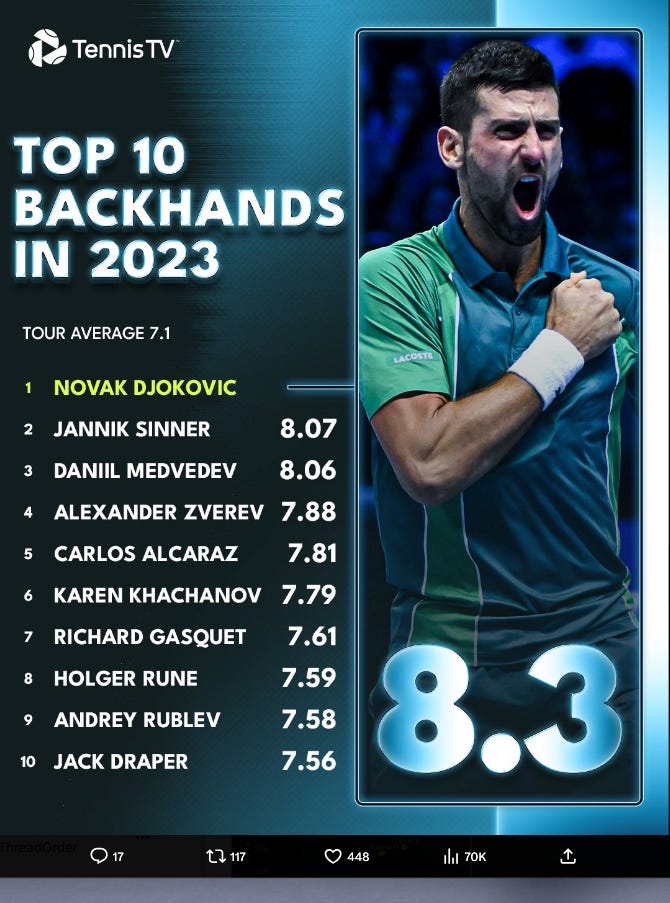
Novak Djokovic topped both the forehand and backhand lists and was the only player to eclipse a 9 rating on the forehand. In Death of a Forehand I asked the question if compact “merry-go-round” forehand setups were prone to timing issues compared to “Ferris Wheel” setups.2 Djokovic is a clear exponent of the longer and smoother modern backswing that reduces the “dynamic flip” that I praised in Death of a Forehand alongside the likes of Sampras, Nadal, Federer, del Potro, Gonzalez, Wawrinka, and Nalbandian. You could lump Alcaraz in the ‘Ferris Wheel’ camp as well mostly, and these results are another data point that supports the theory that such a swing has a slight edge at the pinnacle of the game under current technological constraints.
Agassi had more of an outside, or “merry-go-round” setup in his forehand, but he still lifted the racquet head well above his head, and note the reduced ‘lag’ compared to sinner: the larger racquet head, the shorter levers…all made for a forehand with less degrees of freedom that made him unbelievable at taking the ball early and controlling a flatter shot with impeccable timing. There’s a lot to like about Sinner’s forehand: the wrist extension, the lower elbow and higher racquet head on return, but during rallies when rushed out wide — especially when using an open stance — there are a lot of moving parts to the young Italian’s shot. There is a speed-accuracy tradeoff in these things.
Three of the top four backhands also use a longer takeback, where the left elbow is closer to the body and the racquet in-line with — or in Medvedev’s case, well inside — the hands:



Sinner is the exception of the top four. Similar to Rune, both tend to create a flip with their arms; as they start to unload the body, the racquet has a ‘left-to-right’ merry-go-round effect that creates a lot of space to accelerate the racquet head.


Comparing the two methods, from the recent ATP Finals piece:
The backhands of Alcaraz, Khachanov, and Rublev are much shorter swings by comparison, although Alcaraz achieves a much greater “power position” by getting his racquet head higher in the setup and so in some situations is similar to something like Djokovic.
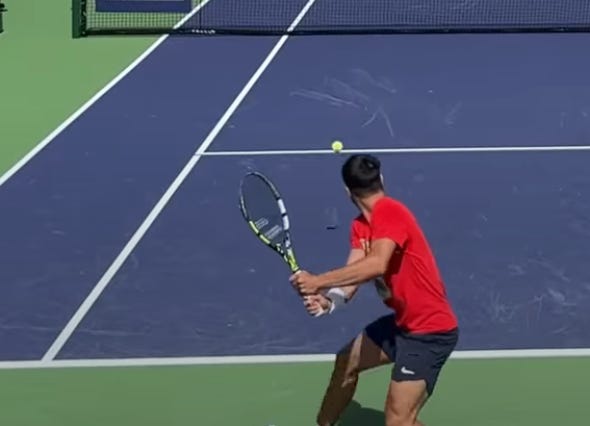
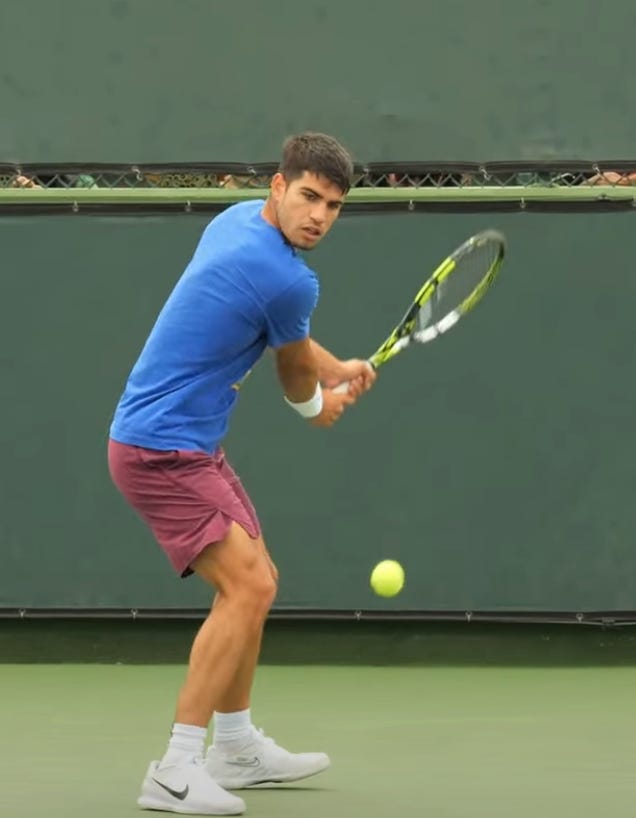


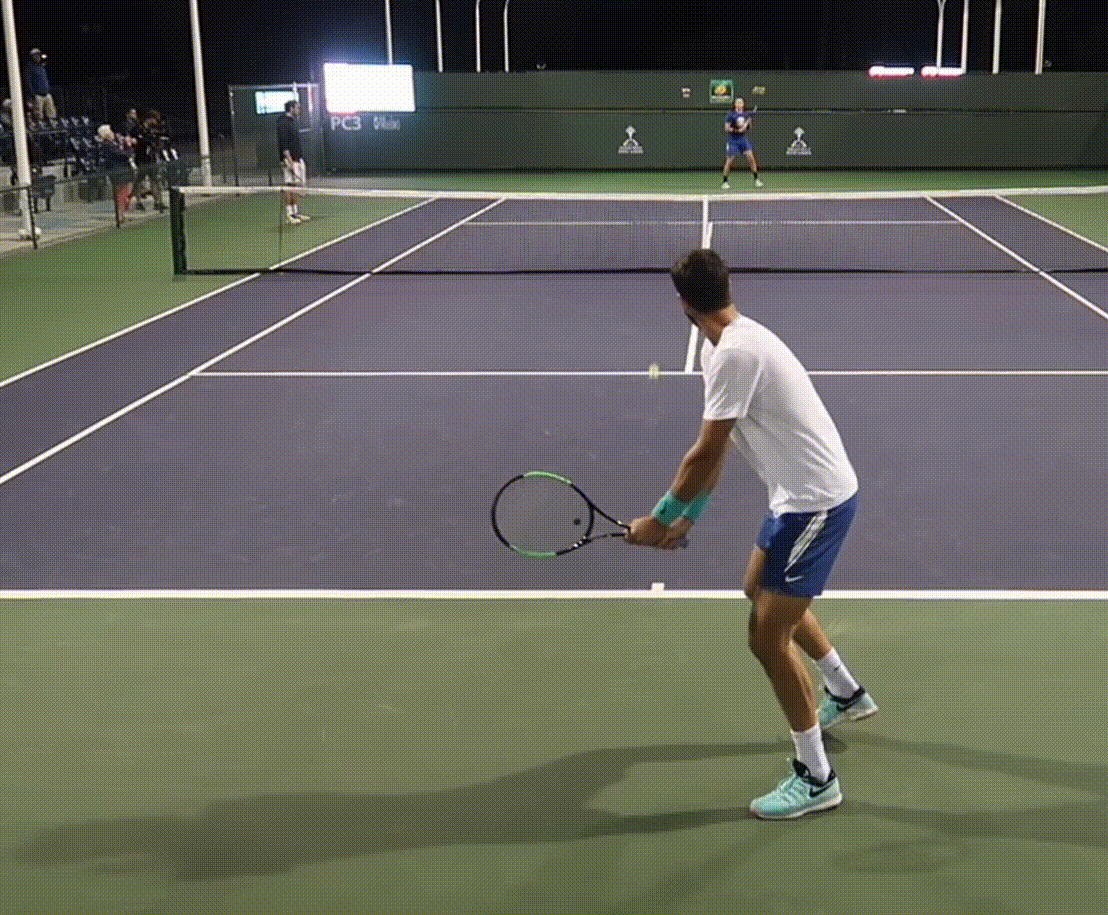
As for serves, it should be no surprise that height was helpful to make the top-10 club.

Ben Shelton was just outside the top-10, and I suspect he will climb higher next year, which brings me to my next question: who will make the lists in 2024? Who will leave?
As always, fitness, movement, confidence, tactics, talent, etc. are all more important — technique is the icing on the cake — but for amusement, and going off the technical theories I throw around, here are some forehands that I think could make the list in 2024:
Francisco Cerundolo, Holger Rune, Felix Auger-Aliassime, Arthur Fils. Wildcard pick: Hamad Medjedovic.


I didn’t really mention locked-wrist follow throughs on the backhands here, but some backhands that I think could make the list:
Taylor Fritz, Sebastian Korda, Alejandro Davidovich Fokina, Hubert Hurkacz. Wildcard pick: Zhizhen Zhang.

While this is a helpful tool from Tennis Insights, it really just makes me ask more questions: how do these shots compare for pressure points? Compiling all 30-30, deuce, and tie-breaker points would be an interesting exercise. Who were the worst shot performers in 2023? Just as there are often similarities in great shots, there tend to be similarities in weaker shots as well. As AI continues to become ubiquitous in sports analytics, I suspect all these questions will be answerable.
Looking forward to the 2024 ATP season kicking off in Brisbane.
Who are your picks to make the lists in 2024?
Happy New Year to all and see you in the comments. HC.
There is a lot of noise even in this loose grouping. For example, Khachanov has an extreme forehand grip (Western) and Bautista Agut’s is closer to Eastern.





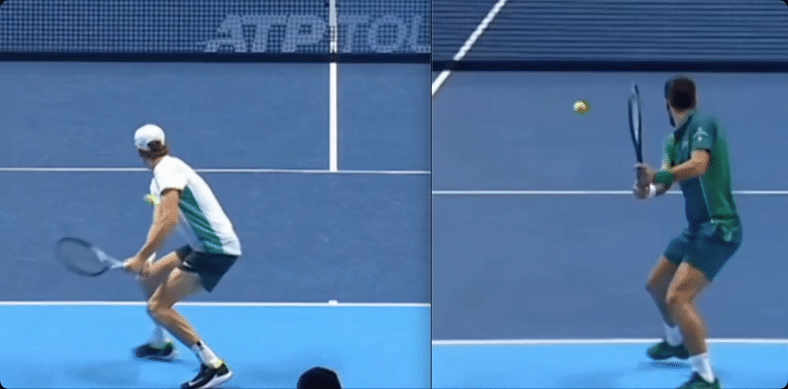
Very interesting that Gasquet's backhand is in the mix still. This whole 1 vs. 2 debate is interesting. It is clear that 2 handed bh's are in the majority by a wide margin. And yet, we have a one hander who can still move into the top 10.
The only question I have is what this list would have looked like in Wawrinka's best years, 2014-17 or so. Would Wawrinka make the top ten on the backhand side?
Just throwing this out there. My opinion is that he has the best backhand in the last 10 years or so. I know that Hugh still takes Feds backhand over Stans. But even watching Stan today, I see that he has the ability to simply leave a player standing when he is able to belt one.
He is the only one who could go toe-to-toe with Djokovic and win the matchup on his good days. On his off days, it was still a tough win for Djokovic. Only Nadal's forehand could handle Stan's backhand and really only at the French. On hard court, Stan could stand his ground.
Here is just one clip from a practice session. https://youtu.be/VZHhmg1v4Zw?t=32
You can see that even against Nadal's forehand, Stan could hit clean winners.
Okay, I'll stop my Stan gush session. Hope everyone is having a good 2024 so far!
Hey Hugh - thanks for all the great articles in 2023. All the analysis has helped me to focus on the bigger picture in my own strokes and has helped me tremendously, so just wanna say thanks :)